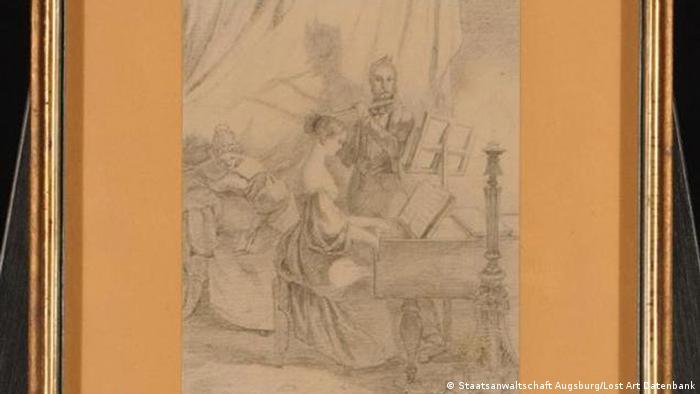News:
Germany returns latest Nazi-looted work from Gurlitt art trove
Germany says it has now returned 14 artworks — from a collection looted by the Nazis from Jewish owners — to their rightful heirs.
German officials said on Wednesday they had returned to its rightful owners the last of 14 artworks unambiguously confirmed as having been looted by the Nazis.
Culture Minister Monika Grütters said all of the pieces identified in a report earlier this year as stolen by the Nazis had now been handed back. The artworks come from a collection held by now-deceased Munich pensioner Cornelius Gurlitt — the son of a Nazi-era art dealer — which first surfaced 8 years ago.
The most recent work to be given back was "Klavierspiel" (Playing the Piano), a drawing by the German artist Carl Spitzweg. It was passed on to Christie's auction house according to the wishes of the heirs of Jewish music publisher Henri Hinrichsen, who was murdered by the Nazis at Auschwitz in 1942.
The handover was arranged with the Museum of Fine Arts in Bern, which inherited the collection when Gurlitt died in 2014.
Grütters said it was "an important signal" that all the works so far identified as looted art had been returned to their owners' heirs.

Carl Spitzweg, Playing the Piano, ca. 1840: This drawing by Carl Spitzweg was seized in 1939 from Jewish music publisher Heinri Hinrichsen, who was killed at the Auschwitz death camp in 1942. It was acquired by Nazi art dealer Hildebrand Gurlitt — and later found among the spectacular collection of works hoarded by his son, Cornelius Gurlitt. The work has now been handed over to Christie's auction house at the request of Hinrichsen's heirs.
Behind every one of these pictures stands a human, tragic fate such as that of Auschwitz victim Dr. Henri Hinrichsen," she said in a statement.
"We cannot make up for this severe suffering, but we are trying with the appraisal of Nazi art looting to make a contribution to historical justice and fulfill our moral responsibility."
Grütters stressed that Germany had a lasting commitment to continue with the appraisal and provenance research of pieces of art.
How the artworks came to light after decades
The reclusive Cornelius Gurlitt, who died in 2014, had hidden away more than 1,200 works in his Munich apartment, plus another 250 or so found at a property on the outskirts of the Austrian city of Salzburg. He inherited much of the collection from his father, a Nazi-era art dealer. Officials first came across his art collection while investigating a tax case in 2012.
Authorities seized some 1,500 pieces in all, including artworks by such notable artists as Picasso, Renoir, Cezanne and Matisse.
The discovery of the hoard, kept secret until the following year, made global headlines and revived a debate about how thoroughly Germany had worked to reconcile art plundered by the Nazi regime with its rightful owners.
In his will, Gurlitt bequeathed the works to a Swiss museum, the Kunstmuseum Bern. However, a German government-backed foundation has been working with the museum to make sure any pieces that were looted from Jewish owners are returned.
The relatively small number of works handed back in recent years has been attributed to the painstaking and gradual process of working out the ownership of each piece.
The restitution process has been criticized by many heirs and activists as too slow. They say the case underlines an ongoing need for thorough research into the provenance of works held more generally in museum holdings and private collections.


